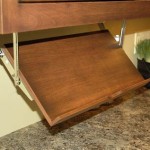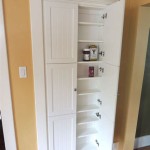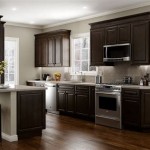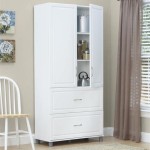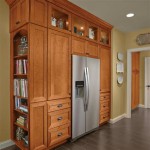Where Should Cabinet Handles Be Placed?
Cabinet handles, while seemingly minor details, play a significant role in both the functionality and aesthetics of kitchen and bathroom cabinetry. Proper placement ensures comfortable and efficient use while contributing to the overall design harmony of the space. Understanding the various factors influencing handle placement can help homeowners make informed decisions that optimize both practicality and visual appeal.
One of the primary considerations for handle placement is the type of cabinet door or drawer. For standard cabinet doors, common placement options include the upper corner opposite the hinges or slightly below the top rail. The upper corner placement offers a natural grip for opening, while placement below the rail can provide a more modern aesthetic. For drawers, handles are typically centered horizontally and placed either vertically centered or slightly offset towards the top edge. This allows for a balanced grip and effortless drawer operation.
Cabinet style significantly influences handle placement. Shaker-style cabinets, known for their clean lines and simplicity, often benefit from simple, unfussy handles placed in the upper corner or below the top rail. For more ornate or traditional cabinet styles, handles can be positioned to complement the decorative elements, such as centered on a raised panel or aligned with other architectural details. Modern cabinets often feature sleek, integrated handles or recessed pulls, eliminating the need for traditional knob or pull placement considerations.
Ergonomics plays a crucial role in determining optimal handle placement. Handles should be positioned to allow for comfortable and easy access without requiring excessive reaching or straining. For upper cabinets, consider the average user's height and reach to ensure handles are easily accessible. Lower cabinets should have handles placed high enough to avoid bending too low. Drawer handles should facilitate a natural grip and allow for smooth opening and closing with minimal effort.
The size and weight of the cabinet doors and drawers also influence ideal handle placement. Larger or heavier doors and drawers may require two handles for balanced opening and closing, preventing strain and potential damage to the hardware or cabinetry. The placement of these two handles should distribute the weight evenly, facilitating smooth operation.
Visual balance and proportion are crucial design considerations. Handle placement should contribute to the overall visual harmony of the space. Consider the size and style of the handles in relation to the cabinet dimensions. Larger handles may overwhelm smaller cabinets, while smaller handles can appear lost on larger cabinets. Symmetrical placement of handles on identical cabinets creates a sense of order and balance.
The intended users of the cabinets should also be considered when determining handle placement. In households with children or individuals with mobility challenges, handle placement should prioritize ease of access and safety. Lower placement on upper cabinets and higher placement on lower cabinets may be more suitable for these users.
Beyond the practical aspects, handle placement can significantly contribute to the overall aesthetic of the kitchen or bathroom. Handles can be used to enhance a particular design style, from minimalist to ornate. The material, finish, and shape of the handles should complement the overall design scheme, creating a cohesive and visually appealing space.
When selecting handle placement, it is advisable to experiment with different options before making permanent installations. Temporary placement using painter's tape can help visualize the placement and ensure comfortable and efficient use before drilling holes. This allows for adjustments and ensures optimal placement for both functionality and aesthetics.
Furthermore, consider the proximity of handles to other elements such as appliances, walls, and adjacent cabinets. Handles should not interfere with the operation of appliances or create obstructions when opening and closing doors and drawers. Sufficient clearance should be provided to ensure smooth and unobstructed access.
Finally, it is recommended to consult with a professional cabinet installer or designer for personalized advice on handle placement. They can assess the specific characteristics of the cabinetry and the overall design of the space to recommend optimal placement for both functionality and aesthetics.
Careful consideration of these various factors will ensure that cabinet handle placement contributes to both the usability and the visual appeal of the space. By understanding the interplay of these elements, homeowners can make informed decisions that enhance the overall design and functionality of their kitchens and bathrooms.

Cabinet Hardware Placement Guide

How To Install Cabinet Handles Straight Without Losing Your Mind

How To Properly Execute Cabinet Hardware Placement Van Dyke S Rers

How To Install Cabinet Handles The Home Depot

Learn How To Place Kitchen Cabinet Knobs And Pulls Cliqstudios

Where To Place Cabinet Hardware Emtek

How To Install Cabinet Handles Straight Without Losing Your Mind
Cabinet Hardware Placement Where To Put Knobs And Handles Vevano

Comprehensive Guide To Cabinet Hardware Size Placement Handles More

Fix It If Cabinet Handles Installed Wrong Green With Decor
Related Posts



